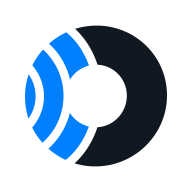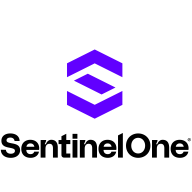


In the cloud security category, Orca Security and SentinelOne Singularity Cloud Security compete for dominance. Orca appears to have the upper hand due to its unique visibility capabilities and simplicity in cloud-specific environments.
Features: Orca Security provides deep visibility into cloud environments using agentless SideScanning technology, which offers real-time risk assessment and efficient resource allocation. It gives comprehensive security insights without the need for traditional access methods and includes the valuable ability to rank gaps and tasks. Orca's strength also lies in container posture management with Kubernetes and Docker. SentinelOne Singularity Cloud Security stands out with automated threat response and AI-driven capabilities, offering protection across multiple cloud workloads. It excels in real-time threat detection and seamless integration with existing security frameworks. The platform also supports dynamic XDR capabilities for unified visibility.
Room for Improvement: Orca Security could improve by offering real-time risk assessment in active states and extending services to data centers, enhancing versatility for mixed cloud and on-premises environments. SentinelOne Singularity Cloud Security might benefit from reducing resource intensity, increasing detection speed, and enhancing integration with third-party tools. Offering more robust custom policy support could also better align with various infrastructure needs.
Ease of Deployment and Customer Service: Orca Security is praised for its straightforward and agentless deployment, especially suitable for cloud environments. It provides immediate insights without complex setups, and its customer support is highly responsive. Conversely, SentinelOne Singularity Cloud Security offers a broader range of deployment options, including hybrid cloud scenarios, while maintaining strong customer support. Orca's approach simplifies initial onboarding in cloud-native environments, whereas SentinelOne provides flexibility for wider deployment needs.
Pricing and ROI: Orca Security is noted for its inclusive licensing that avoids additional costs beyond standard fees, contributing to substantial ROI by reducing overhead. It is competitively priced in relation to the comprehensive features provided. SentinelOne Singularity Cloud Security offers modular pricing, allowing organizations to pay only for necessary features, enhancing cost-effectiveness. While Orca offers cost savings through its agentless model and visibility, SentinelOne provides flexibility through module-based pricing, addressing diverse budget requirements.



| Company Size | Count |
|---|---|
| Small Business | 9 |
| Midsize Enterprise | 7 |
| Large Enterprise | 5 |
| Company Size | Count |
|---|---|
| Small Business | 46 |
| Midsize Enterprise | 20 |
| Large Enterprise | 53 |
Zafran Security integrates with existing security tools to identify and mitigate vulnerabilities effectively, proving that most critical vulnerabilities are not exploitable, optimizing threat management.
Zafran Security introduces an innovative operating model for managing security threats and vulnerabilities. By leveraging the threat exposure management platform, it pinpoints and prioritizes exploitable vulnerabilities, reducing risk through immediate remediation. This platform enhances your hybrid cloud security by normalizing vulnerability signals and integrating specific IT context data, such as CVE runtime presence and internet asset reachability, into its analysis. No longer reliant on patch windows, Zafran Security allows you to manage risks actively.
What are the key features of Zafran Security?
What benefits can users expect from Zafran Security?
In industries where security is paramount, such as finance and healthcare, Zafran Security provides invaluable protection by ensuring that only exploitable vulnerabilities are addressed. It allows entities to maintain robust security measures while allocating resources efficiently, fitting seamlessly into existing security strategies.
Orca Security provides comprehensive security management with agentless visibility and SideScanning technology, ensuring efficient threat detection without performance impact.
Orca Security offers agentless visibility across multi-cloud environments, streamlining security management with features like SideScanning technology and centralized security tools. It focuses on automation, vulnerability management, and compliance checks, enhancing a company's security posture with real-time alerts and integrated threat detection. Its intuitive interface prioritizes critical issues, making it suitable for managing DevSecOps processes efficiently.
What are the key features of Orca Security?
What benefits and ROI should companies look for in Orca Security?
Companies in industries such as finance, healthcare, and technology leverage Orca Security for cloud security posture management, ensuring compliance with standards and securing applications and databases. Its agentless approach provides comprehensive visibility across AWS, GCP, and Azure, enhancing risk assessment and vulnerability management without impacting asset performance.
SentinelOne Singularity Cloud Security offers a streamlined approach to cloud security with intuitive operation and strong integration capabilities for heightened threat detection and remediation efficiency.
Singularity Cloud Security stands out for its real-time detection and response, effectively minimizing detection and remediation timelines. Its automated remediation integrates smoothly with third-party tools enhancing operational efficiency. The comprehensive console ensures visibility and support for forensic investigations. Seamless platform integration and robust support for innovation are notable advantages. Areas for development include improved search functionality, affordability, better firewall capabilities for remote users, stable agents, comprehensive reporting, and efficient third-party integrations. Clarity in the interface, responsive support, and real-time alerting need enhancement, with a call for more automation and customization. Better scalability and cost-effective integration without compromising capabilities are desired.
What are SentinelOne Singularity Cloud Security's standout features?SentinelOne Singularity Cloud Security is deployed in industries needing robust cloud security posture management, endpoint protection, and threat hunting. Utilized frequently across AWS and Azure, it assists in monitoring, threat detection, and maintaining compliance in diverse environments while providing real-time alerts and recommendations for proactive threat management.
We monitor all Cloud-Native Application Protection Platforms (CNAPP) reviews to prevent fraudulent reviews and keep review quality high. We do not post reviews by company employees or direct competitors. We validate each review for authenticity via cross-reference with LinkedIn, and personal follow-up with the reviewer when necessary.